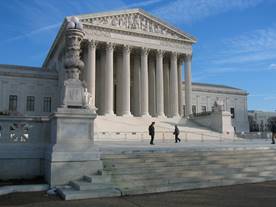

自明性の判断基準
Graham v. John Deer
(1966年合衆国最高裁判決)
特許権者: William Graham氏
被疑侵害者: John Deer社
問題となった特許:
US Patent No. 2,493,811 (Jan. 10, 1950)
US Patent No. 2,627,798 (Feb. 10, 1953)
土地を耕す装置に関する発明で岩等固い土地或いは凸凹の土地を耕すときに工具の先端部(3)に損傷を少なくするためにシャンクを揺動する構造としたことを特徴とする。
Graham氏はJohn Deer社を相手に侵害訴訟を提起した。結果的にGraham氏の特許は引例に鑑み自明であり無効となったが、最高裁まで上がり、今日の自明性判断の基準が判示された。

審査便覧 2141 米国特許法103条:
自明性の判断基準(1966年Graham合衆国最高裁判決より)
自明性の判断は、Graham事件の事実認定(以下の項目)に基づく法律問題である:
|
(A) Determining the scope and content of the prior art; |
先行技術の開示範囲と内容を特定する; |
|
(B) Ascertaining the differences between the claimed invention and the prior art; |
先行技術とクレームとの差異を確定する; |
|
(C) Resolving the level of ordinary skill in the pertinent art. |
関連技術における当業者のレベルを解明する; |
Objective evidence (such as commercial success, long-felt but unsolved needs, failure of others, and unexpected results) relevant to the issue of obviousness must be evaluated by Office personnel.
客観的な証拠(市場での成功、長年に渡り実現されなかった必要性、他者の失敗、予期せぬ効果等)を検討する;